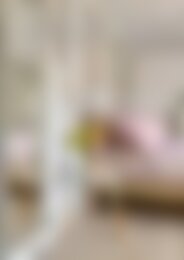Surrey Homes | SH29 | March 2017 | Fashion supplement inside
The lifestyle magazine for Surrey - Inspirational Interiors, Fabulous Fashion, Delicious Dishes
The lifestyle magazine for Surrey - Inspirational Interiors, Fabulous Fashion, Delicious Dishes
You also want an ePaper? Increase the reach of your titles
YUMPU automatically turns print PDFs into web optimized ePapers that Google loves.
Jane Howard’s<br />
Fables from the Farm<br />
The heifers go straight to the front of the queue when calving starts<br />
Excitement is rising at Coopers<br />
Farm. It’s nine months now since<br />
George the bull went out with the<br />
cows and so not surprisingly we’re about<br />
to start calving again. Before it kicks off,<br />
the prospect of leaving a warm bed in the<br />
middle of the night to trudge down to<br />
the barn is still a memory rather than a<br />
chilly reality and spirits are high.<br />
I’ve prepared everything I need –<br />
lubricant, ropes and iodine – so I just<br />
need one of them to get on with it. We<br />
always calve the heifers (the first-time<br />
mums) first. Not only do they take<br />
longer in labour, but they<br />
are also more likely to need<br />
assistance to deliver their<br />
calf. Calves should come out<br />
feet and head first, effectively<br />
diving into the world. Once<br />
the hooves appear and<br />
having checked they are<br />
front ones, if things don’t<br />
progress it’s just a case of putting ropes<br />
round their fetlocks and pulling as mum<br />
pushes. However, often problems arise<br />
because the calf is coming backwards,<br />
upside down, sideways or with a foot<br />
or head back in which case some clever<br />
manipulation is required.<br />
All too technical to describe here but,<br />
once the business is done and hopefully<br />
there’s a healthy calf on the ground, you<br />
might imagine you could happily shuffle<br />
back to that cosy bed. But oh no, the lot<br />
of the bovine midwife is far from over.<br />
Newborn calves are delivered into<br />
“Sussex cows<br />
will carry on<br />
producing healthy<br />
calves well into<br />
their teens.”<br />
a world that is far from hygienic – no<br />
sterilised bottles for them. Immunity<br />
comes from their mother’s colostrum –<br />
the first thick milk which is stuffed with<br />
antibodies – but the problem is they<br />
can only absorb their full quota for the<br />
first six or seven hours after being born.<br />
After that, the lining of their gut changes<br />
and they can no longer absorb the big<br />
antibody molecules. So in the first few<br />
hours they must consume about 2½<br />
litres of colostrum and if they don’t then<br />
the likelihood of them succumbing to<br />
infection in the weeks ahead is high.<br />
So imagine, dear reader,<br />
it’s three in the morning,<br />
you’ve pulled and tugged<br />
the calf into the world<br />
and left it with mum to<br />
lick dry and encourage<br />
to drink while you have<br />
a cup of tea. It’s sooo<br />
annoying then to return<br />
to the shed to discover nothing has<br />
happened, the wet calf is still lying where<br />
you left it and the mother is nonchalantly<br />
munching hay as though nothing much<br />
has happened. This is most common<br />
with heifers who are far from impressed<br />
by the effort of giving birth and see no<br />
good reason to pursue motherhood and<br />
its associated responsibilities any further.<br />
What then follows is an hour or so<br />
of getting a slippery, wet, heavy (about<br />
50kg) calf to stand up and then, crablike,<br />
the two of you shuffle slowly toward<br />
the udder of said heifer. By giving her a<br />
bucket of grub you usually have about<br />
10 minutes – when she’s more interested<br />
in food than kicking you away – to get<br />
the calf on and sucking. Colostrum is<br />
extraordinary stuff, and once the feeble<br />
calf has had a decent slug it acquires<br />
super strength which enables it to persist<br />
with mum who hopefully takes line of<br />
least resistance and lets it drink.<br />
Once all the heifers are done and<br />
dusted the cows start calving. Sussex<br />
cows will carry on producing healthy<br />
calves well into their teens. Once you’ve<br />
had six or seven calves, number eight is<br />
likely to pop out fairly quickly and mum<br />
also knows what is expected and will<br />
immediately get on with the job-in-hand.<br />
Happy days!<br />
Follow Jane Howard – and the farm<br />
– on Instagram @coopersfarm<br />
wealdentimes.co.uk<br />
132


















